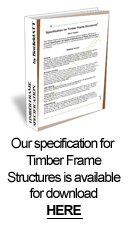Health & Safety Issues On-Site
Poor sites are far too common throughout the construction industry today. Not only is this dangerous both for our workforce, your site team and the public, but it can contribute to the negative image of the industry. A complete culture shift is required to raise expectations and to ensure that poor site conditions are not endured or condoned by anyone...
The construction industry is responsible for more deaths than any other industry. As a professional Chartered Building Consultancy, Benfield ATT require a safe site to work in. We will endeavour to work to the highest Health & Safety standards whilst on your site and offer some tips for health and safety success.
- Can everyone on the project reach their place of work safely, e.g. are roads, gangways, passageways, passenger hoists, staircases, ladders and scaffolds in good condition?
- Are there guard rails or equivalent protection to stop falls from open edges on scaffolds, mobile elevating work platforms, buildings, gangways, excavations, etc?
- Are all holes and openings securely guard railed, provided with an equivalent standard of edge protection or provided with fixed, clearly marked covers to prevent falls?
- Are the working structures stable, adequately braced and not overloaded?
- Are all working areas and walkways level and free from trip hazards, obstructions such as stored material and waste?
- Is our site tidy, and are materials stored safely?
- Have we arranged proper arrangements for collecting and disposing of waste materials?
- Is the work area and interior adequately lit? Have we sufficient additional lighting provided when work is carried on after dark or inside buildings?
Scaffold
- Are all of our scaffolds and work platforms erected, altered and dismantled by competent persons?
- Do we have handover certificates for all work platforms and scaffolds?
- Is there safe access method (ladder) to the scaffold platform?
- Have all uprights been provided with base plates (and, where necessary, timber sole plates) or prevented in some other way from slipping or sinking?
- Are all of the uprights, ledgers, braces and struts in position?
- Is the scaffold secured to the building or structure in enough places to prevent collapse?
- Are there adequate guardrails and toe boards or an equivalent standard of protection at every edge from which a person could fall 2 m or more?
- Are intermediate guardrails fitted?
Where guard rails and toe boards or similar are used:
- Are the toe boards at least 150 mm in height?
- Is the upper guardrail positioned at a height of at least 910 mm above the work area?
- Are additional precautions, e.g. intermediate guard rails or brick guards in place to ensure that there is no unprotected gap of more than 470 mm between the toe board and upper guard rail?
- Are the working platforms fully boarded and are the boards arranged to avoid tipping or tripping?
- Are there effective barriers or warning notices in place to stop people using an incomplete scaffold, e.g. where working platforms are not fully boarded?
- Has the scaffold been designed and constructed to cope with the materials stored on it and are these distributed evenly?
- Does a competent person inspect the scaffold regularly, e.g. at least once a week; always after it has been substantially altered, damaged and following extreme weather?
- Are the results of inspections recorded in our company records or site diary?
Powered Access Equipment
- Has the equipment been erected by a competent person?
- Is fixed equipment, e.g. mast climbers, rigidly connected to the structure against which it is operating?
- Does our working platform have adequate guard rails and toe boards or other barriers to prevent people and materials falling off?
- Have precautions been taken to prevent people being struck by the moving platform, projections from the building or falling materials, e.g. barrier or fence around the base?
- Are our operators or sub contractors trained and competent to use this equipment?
- Is the power supply isolated and the equipment secured at the end of the working day?







